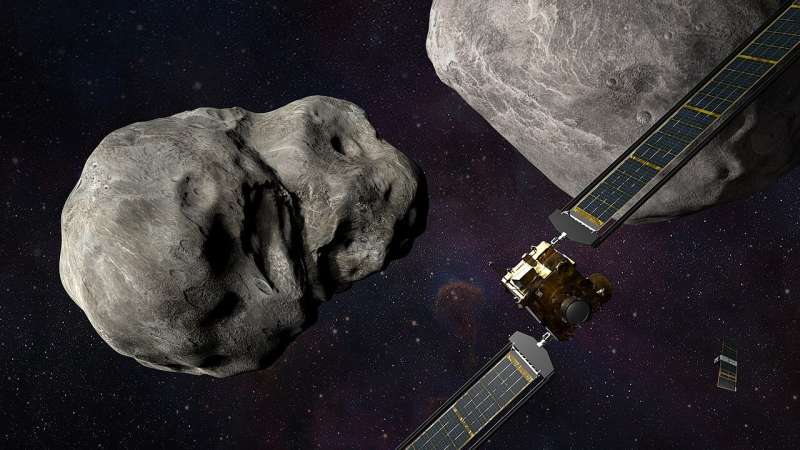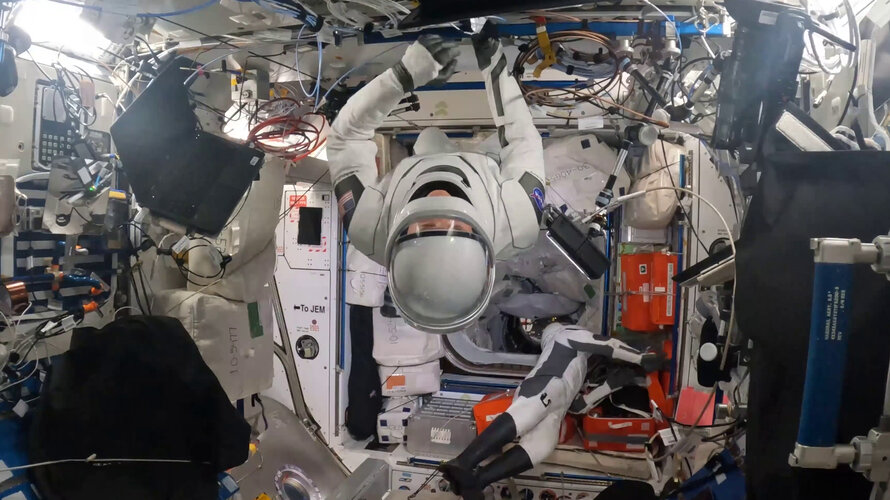
Copernical Team
Emirates Mars mission discovers new mysterious aurora
 The Emirates Mars Mission, the first interplanetary exploration undertaken by an Arab nation, today released stunning images of Mars' enigmatic discrete auroras, following a series of revolutionary observations that promise new answers - and new questions - about the interactions between Mars' atmosphere, the planet's magnetic fields and the solar wind.
The observations include a never-bef
The Emirates Mars Mission, the first interplanetary exploration undertaken by an Arab nation, today released stunning images of Mars' enigmatic discrete auroras, following a series of revolutionary observations that promise new answers - and new questions - about the interactions between Mars' atmosphere, the planet's magnetic fields and the solar wind.
The observations include a never-bef Farewell to the Torridon Quad - Sols 3459-3461
 We have left the pediment behind and are making our way back to an alternate "MSAR" or "Mount Sharp Ascent Route." We are at the second (of three) observation stops for this area, chosen as they offer the best chance to acquire high resolution images of the structures in the buttes. We have noticed some dark layers which are reminiscent of the lenses at "The Prow" and may indicate changing grain
We have left the pediment behind and are making our way back to an alternate "MSAR" or "Mount Sharp Ascent Route." We are at the second (of three) observation stops for this area, chosen as they offer the best chance to acquire high resolution images of the structures in the buttes. We have noticed some dark layers which are reminiscent of the lenses at "The Prow" and may indicate changing grain NASA's new solar sail system to be tested on-board NanoAvionics satellite bus
 NanoAvionics has been selected to build a 12U nanosatellite bus for an in-orbit demonstration of NASA's Advanced Composite Solar Sail System (ACS3). This a result of a contract between NASA Ames Research Center and AST for a 12U bus to carry NASA's payload into low Earth orbit (LEO) including an approximately 800 square foot (74 square meter) composite boom and solar sail system.
The aim
NanoAvionics has been selected to build a 12U nanosatellite bus for an in-orbit demonstration of NASA's Advanced Composite Solar Sail System (ACS3). This a result of a contract between NASA Ames Research Center and AST for a 12U bus to carry NASA's payload into low Earth orbit (LEO) including an approximately 800 square foot (74 square meter) composite boom and solar sail system.
The aim British rocket company calls for Iceland to grant licence for landmark launch
 British rocket company Skyrora has called on the Icelandic government to grant the licence that would end a months-long delay to Europe's largest-ever suborbital rocket launch, originally set for September 2021. With the launch from Husavik, Iceland - for which it built Europe's largest mobile spaceport - Skyrora had been ready to take a crucial next step towards its goal of completing the first
British rocket company Skyrora has called on the Icelandic government to grant the licence that would end a months-long delay to Europe's largest-ever suborbital rocket launch, originally set for September 2021. With the launch from Husavik, Iceland - for which it built Europe's largest mobile spaceport - Skyrora had been ready to take a crucial next step towards its goal of completing the first Successful test launch a giant leap for rocketry team
 Students of the University of Sydney's rocketry society, the USYD Rocketry Team, have their eyes firmly set on gold after successfully launching their 2022 competition rocket in New South Wales's far west.
After a two-year pandemic hiatus, the team will fly to the US in June to compete at Spaceport America Cup, an international student rocketry competition held annually in New Mexico.
Students of the University of Sydney's rocketry society, the USYD Rocketry Team, have their eyes firmly set on gold after successfully launching their 2022 competition rocket in New South Wales's far west.
After a two-year pandemic hiatus, the team will fly to the US in June to compete at Spaceport America Cup, an international student rocketry competition held annually in New Mexico. New standard will aid in classification of commercial spaceflight safety events
 ASTM's commercial spaceflight committee (F47) has approved a new standard that will help to enhance commercial spaceflight safety. The standard (F3550) provides guidance to space flight operators on classifying safety-related events.
"This new standard will help to classify events based on severity and impact," says ASTM International member Oscar Garcia, chairman and CEO, InterFlight Glob
ASTM's commercial spaceflight committee (F47) has approved a new standard that will help to enhance commercial spaceflight safety. The standard (F3550) provides guidance to space flight operators on classifying safety-related events.
"This new standard will help to classify events based on severity and impact," says ASTM International member Oscar Garcia, chairman and CEO, InterFlight Glob Rocket Lab catches rocket booster returning from space with helicopter
 Rocket Lab (Nasdaq: RKLB) has successfully launched its 26th Electron mission, deploying 34 satellites to orbit. Rocket Lab has now deployed a total of 146 satellites to orbit with the Electron launch vehicle.
The "There And Back Again" mission also saw Rocket Lab complete a mid-air capture of the Electron booster with a helicopter for the first time. After launching to space, Electron's first
Rocket Lab (Nasdaq: RKLB) has successfully launched its 26th Electron mission, deploying 34 satellites to orbit. Rocket Lab has now deployed a total of 146 satellites to orbit with the Electron launch vehicle.
The "There And Back Again" mission also saw Rocket Lab complete a mid-air capture of the Electron booster with a helicopter for the first time. After launching to space, Electron's first China is building an asteroid deflection mission of its own, due for launch in 2025

There's an old joke that the dinosaurs are only extinct because they didn't develop a space agency. The implication, of course, is that unlike our reptilian ancestors, we humans might be able to save ourselves from an impending asteroid strike on Earth, given our six-and-a-half decades of spaceflight experience. But the fact is that while we have achieved amazing things since Sputnik kicked off the space age in 1957, very little effort thus far has gone into developing asteroid deflection technologies. We are woefully inexperienced in this arena, and aside from our Hollywood dramatizations of it, we've never yet put our capabilities to the test. But that's about to change.
Wu Yanhua, deputy head of the China National Space Administration (CNSA), announced last week that they plan to carry out an asteroid deflection test as early as 2025—part of a larger asteroid monitoring and defense system that the CNSA is in the early stages of developing.
Amid tensions on Earth, the United States claims that 'conflict in space is not inevitable'

In 1996, Joseph W. Ashy, former U.S. commander-in-chief of the North American Aerospace Defense Command, famously said: "We're going to fight in space. We're going to fight from space and we're going to fight into space."
In less than three decades since then, we've seen the establishment of the U.S. Space Force, anti-satellite weapons testing by major spacefaring nations and the rapid development of weapons that can interfere with, disrupt or destroy space assets.
No wonder there are many concerns about the potential of war in space. But the belief in the inevitability of space becoming the next major battlefield runs the risk of becoming, as space law expert Steven Freeland writes, "a self-fulfilling prophecy if care and restraint is not exercised."
It is therefore refreshing that, on April 18, U.S.
Spacesuit waltz| Cosmic Kiss
 Video:
00:01:27
Video:
00:01:27
Join ESA astronaut Matthias Maurer, and his Crew-3 mates NASA astronauts Kayla Barron, Raja Chari and Thomas Marshburn, as they check out their Crew Dragon launch and entry suits before they return to Earth.
The spacesuits are custom-made for each crew member and protect the astronauts from potential fire and depressurisation in the crew capsule. A single connection point on the thigh, connects the spacesuits to the life support system that supplies the astronauts with oxygen and power, as well as cooling and communication systems.
The suits are equipped with touchscreen-compatible gloves and a flame-resistant outer layer and can
